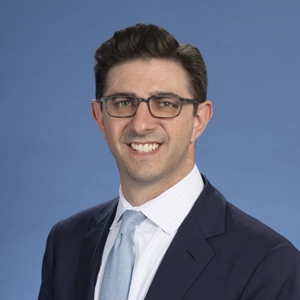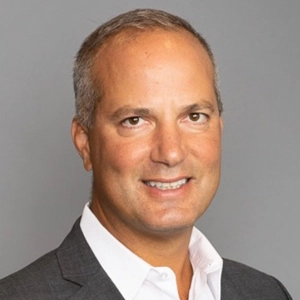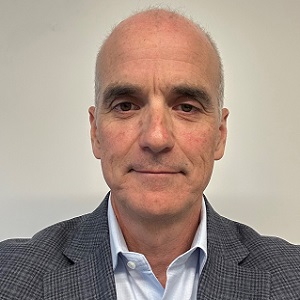What’s the current mood across the sector?
Cliff Bayer: The summer season is typically the highest grossing season for the airlines, and momentum has grown over this peak season, with July demand reaching 4 to 5% growth. That trend appears across all regions and is particularly evident in the international travel market.
On the defense side, it's an even better picture. We're looking at a defense budget in 2025 approaching $1 trillion, up from about $875 billion in 2024. We're seeing a massive influx of defense spending in Europe, and the public market share prices and multiples reflect that.
Gaddy Cohen: Companies describe the industrial macro as challenging but steady. Datacenters stand out as the strongest growth vertical, offering multiyear visibility for the suppliers that address that end market.
George Murphy: With developments in AI, datacenters, power generation, reshoring of facilities in the U.S., and big projects in areas such as semiconductors, technology, and pharmaceuticals, there's an expectation of a lot more infrastructure investment in the U.S. over the next several years.
“There’s an expectation of a lot more infrastructure investment in the U.S. over the next several years.”
George Murphy, Head of Industrial and Commercial Services
How is the potential of artificial intelligence contributing to the picture?
Bayer: AI is really transforming the military and defense sector by enhancing battlefield decision making, intelligence analysis, and cyber defenses.
On the commercial side, airlines are using AI to enhance customer experience, for chat bot support, flight scheduling, and the somewhat controversial applications of AI for dynamic flight price pricing. It’s going to have a pretty big impact on how airlines do business.
Murphy: There’s a revenue opportunity both in building the infrastructure required to power AI’s continued growth and in using AI as a tool to run businesses more efficiently.
AI is really transforming the military and defense sector by enhancing battlefield decision making, intelligence analysis, and cyber defenses.
Cliff Bayer, Head of Aerospace, Defense and Government Services
What does the dealmaking landscape look like?
Murphy: Most management teams I speak with are bullish on growth, but fully capturing these opportunities will require strategic M&A to gain the right capabilities and market exposure.
Cohen: I would say the tone around M&A is constructive but disciplined. Most companies stress their focus on bolt-on deals over transformational ones, some highlighting that careful integration and a focus on accretive returns is their core goal.
Bayer: We're seeing a very robust M&A market in the aerospace and defense markets right now. Over the last 12 months, there's been about 50 transactions of $50 million enterprise value or higher, 12 transactions $1 billion or higher, and one over $5 billion – the sale of Jeppesen by Boeing to Thoma Bravo.
There are three very active areas. Aftermarket growth is being fueled, as OEMs struggle to match demand and assets are used longer. Defense technology is growing with the desire to use more electronic enabled solutions like drones or counter drones in the battlefield. The third area is the space industry: you’re seeing a lot of M&A and consolidation as that market grows.
The tone around M&A is constructive but disciplined. Most companies stress their focus on bolt-on deals over transformational ones.
Gaddy Cohen, Head of Capital Goods and Industrial Technology
How about cross-border deals?
Joshua Rosenbaum: For a number of companies that I spent time with at the conference, particularly within building and construction, one overarching cross-border theme is that the U.S. is still where the action is. I'd say the standards are much higher to allocate any incremental capital outside of the U.S.
Cohen: I agree. Most of the cross-border activity that we're seeing is European companies acquiring in the U.S. Siemens, as an example, has made several acquisitions, with a particular focus on industrial software.
Bayer: In the tariff agreement reached with the EU in July, there was an agreement to essentially give aircraft and related parts a pass on tariffs. There have been similar resolutions with Canada and Mexico. But you haven't seen a lot of cross-border transactions because of the uncertainty in the marketplace earlier this year.
“One overarching cross-border theme is that the U.S. is still where the action is – the standards are much higher to allocate any incremental capital outside of the U.S.”
Joshua Rosenbaum, Global Head of Industrials
What’s the private equity outlook?
Murphy: The sub-verticals within services are fragmented markets, with lots of small private players. So there’s opportunity to augment and turbo-charge organic growth through inorganic growth, acquiring smaller private businesses at lower multiples.
Bayer: Private equity represent anywhere from 30 to 50% of total deal volume in aerospace and defense. I think their activity is going to continue to increase. I do think that we'll continue to see more first-time private equity buyers enter the sector, just because the trends are so favorable.
One of the areas set to see a lot of activity over the next 12 months is investing in suppliers that are weighted towards the OEM supply chain.
Rosenbaum: As private equity considers exits, I think the IPO option is becoming increasingly viable. That being said, it's a very strong corporate market.
What are the key themes to look out for?
Rosenbaum: It’s a very strong financing environment. Public corporates’ equity is valued quite well. The other factor is antitrust. While it's early in the new administration, there's a perception of the environment being more receptive to some deals getting done.
Bayer: For companies that are looking at selling, this is a very constructive market. We are encouraging clients to take another quarter before they do that, because many have very robust growth. Looking at a sale in Q1 or early 2026 is probably prudent, given the level of growth that they're seeing over the course of the year.
I do expect to see a lot more activity over the course of the next 12 months, and activity that's probably skewed more towards private equity than corporate.



